Contents
Guide
Page List

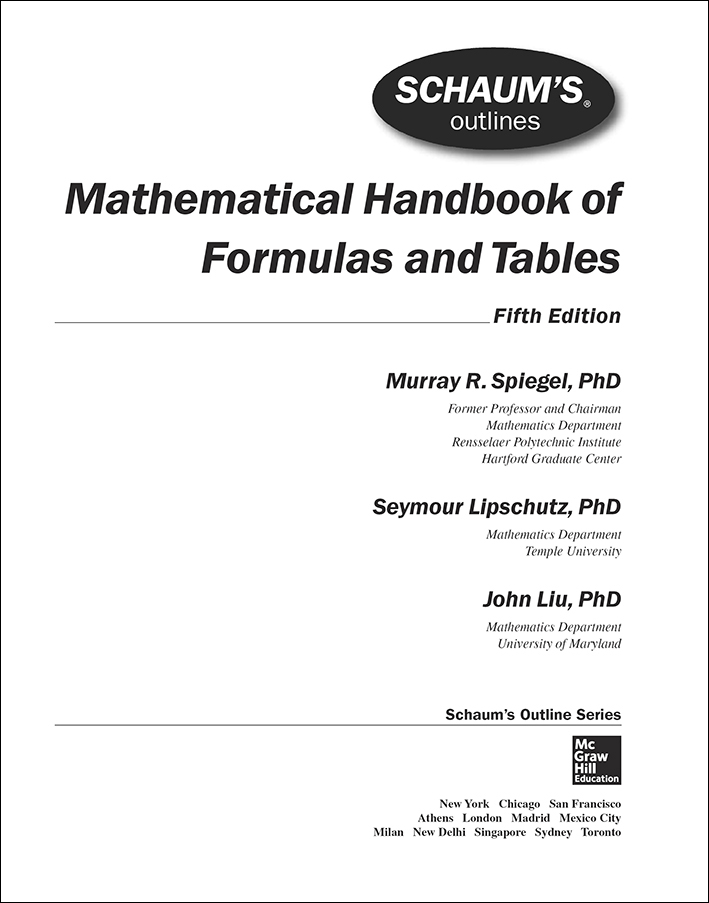
Copyright 2018 by McGraw-Hill Education. All rights reserved. Except as permitted under the United States Copyright Act of 1976, no part of this publication may be reproduced or distributed in any form or by any means, or stored in a database or retrieval system, without the prior written permission of the publisher. ISBN: 978-1-26-001054-1
MHID: 1-26-001054-6. The material in this eBook also appears in the print version of this title: ISBN: 978-1-26-001053-4, MHID: 1-26-001053-8. eBook conversion by codeMantra
Version 1.0 All trademarks are trademarks of their respective owners.
Rather than put a trademark symbol after every occurrence of a trademarked name, we use names in an editorial fashion only, and to the benefit of the trademark owner, with no intention of infringement of the trademark. Where such designations appear in this book, they have been printed with initial caps. McGraw-Hill Education eBooks are available at special quantity discounts to use as premiums and sales promotions or for use in corporate training programs. To contact a representative, please visit the Contact Us page at www.mhprofessional.com. SEYMOUR LIPSCHUTZ is on the faculty of Temple University and formally taught at the Polytechnic Institute of Brooklyn. He received his PhD in 1960 at Courant Institute of Mathematical Sciences of New York University.
He is one of Schaums most prolific authors. In particular, he has written, among others, Linear Algebra, Probability, Discrete Mathematics, Set Theory, Finite Mathematics, and General Topology. JOHN LIU is presently a professor of mathematics at University of Maryland, and he formerly taught at Temple University. He received his PhD from the University of California, and he has held visiting positions at New York University, Princeton University, and Berkeley. He has published many papers in applied mathematics, including the areas of partial differential equations and numerical analysis. The late MURRAY R.
SPIEGEL received the MS degree in physics and the PhD degree in mathematics from Cornell University. He had positions at Harvard University, Columbia University, Oak Ridge, and Rensselaer Polytechnic Institute, and served as a mathematical consultant at several large companies. His last position was Professor and Chairman of Mathematics at the Rensselaer Polytechnic Institute, Hartford Graduate Center. He was interested in most branches of mathematics, especially those that involve applications to physics and engineering problems. He was the author of numerous journal articles and 14 books on various topics in mathematics. TERMS OF USE This is a copyrighted work and McGraw-Hill Education and its licensors reserve all rights in and to the work.
Use of this work is subject to these terms. Except as permitted under the Copyright Act of 1976 and the right to store and retrieve one copy of the work, you may not decompile, disassemble, reverse engineer, reproduce, modify, create derivative works based upon, transmit, distribute, disseminate, sell, publish or sublicense the work or any part of it without McGraw-Hill Educations prior consent. You may use the work for your own noncommercial and personal use; any other use of the work is strictly prohibited. Your right to use the work may be terminated if you fail to comply with these terms. THE WORK IS PROVIDED AS IS. McGRAW-HILL EDUCATION AND ITS LICENSORS MAKE NO GUARANTEES OR WARRANTIES AS TO THE ACCURACY, ADEQUACY OR COMPLETENESS OF OR RESULTS TO BE OBTAINED FROM USING THE WORK, INCLUDING ANY INFORMATION THAT CAN BE ACCESSED THROUGH THE WORK VIA HYPERLINK OR OTHERWISE, AND EXPRESSLY DISCLAIM ANY WARRANTY, EXPRESS OR IMPLIED, INCLUDING BUT NOT LIMITED TO IMPLIED WARRANTIES OF MERCHANTABILITY OR FITNESS FOR A PARTICULAR PURPOSE.
McGraw-Hill Education and its licensors do not warrant or guarantee that the functions contained in the work will meet your requirements or that its operation will be uninterrupted or error free. Neither McGraw-Hill Education nor its licensors shall be liable to you or anyone else for any inaccuracy, error or omission, regardless of cause, in the work or for any damages resulting therefrom. McGraw-Hill Education has no responsibility for the content of any information accessed through the work. Under no circumstances shall McGraw-Hill Education and/or its licensors be liable for any indirect, incidental, special, punitive, consequential or similar damages that result from the use of or inability to use the work, even if any of them has been advised of the possibility of such damages. This limitation of liability shall apply to any claim or cause whatsoever whether such claim or cause arises in contract, tort or otherwise.
Preface
This handbook supplies a collection of mathematical formulas and tables which will be valuable to students and research workers in the fields of mathematics, physics, engineering, and other sciences.
Care has been taken to include only those formulas and tables which are most likely to be needed in practice, rather than highly specialized results which are rarely used. It is a user-friendly handbook with material mostly rooted in university mathematics and scientific courses. In fact, the first edition can already be found in many libraries and offices, and it most likely has moved with the owners from office to office since their college times. Thus, this handbook has survived the test of time (while most other college texts have been thrown away). This new edition maintains the same spirit as previous editions, with the following changes. First of all, we have deleted some out-of-date tables which can now be easily obtained from a simple calculator, and we have deleted some rarely used formulas.
The main change is that sections on Probability and Random Variables have been expanded with new material. These sections appear in both the physical and social sciences, including education. There are also two new sections: on Mathematical Finance. Topics covered range from elementary to advanced. Elementary topics include those from algebra, geometry, trigonometry, analytic geometry, probability and statistics, and calculus. Advanced topics include those from differential equations, numerical analysis, and vector analysis, such as Fourier series, gamma and beta functions, Bessel and Legendre functions, Fourier and Laplace transforms, and elliptic and other special functions of importance.
This wide coverage of topics has been adopted to provide, within a single volume, most of the important mathematical results needed by student and research workers, regardless of their particular field of interest or level of attainment. The book is divided into two main parts. presents the numerical tables. These tables include basic statistical distributions (normal, Students t, chi-square, etc.), advanced functions (Bessel, Legendre, elliptic, etc.), and financial functions (compound and present value of an amount, and annuity). McGraw-Hill Education wishes to thank the various authors and publishersfor example, the Literary Executor of the late Sir Ronald A. Fisher, F.R.S., Dr.
Frank Yates, F.R.S., and Oliver and Boyd Ltd., Edinburgh, for Table III of their book Statistical Tables for Biological, Agricultural and Medical Researchwho gave their permission to adapt data from their books for use in several tables in this handbook. Appropriate references to such sources are given below the corresponding tables. Finally, I wish to thank the staff of McGraw-Hill Education Schaums Outline Series, especially Diane Grayson, for their unfailing cooperation. SEYMOUR LIPSCHUTZ Temple University


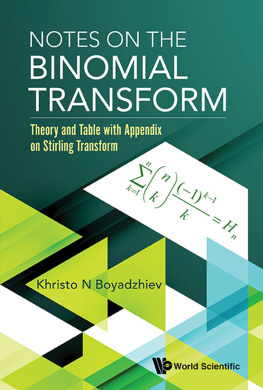
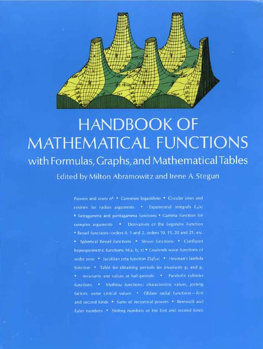
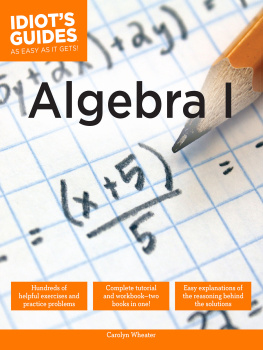
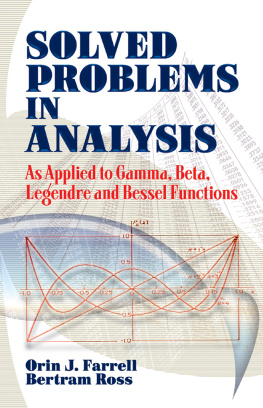
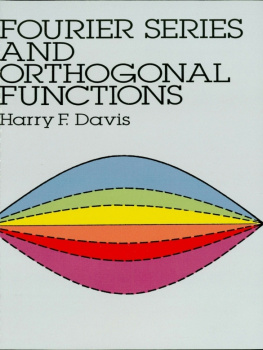
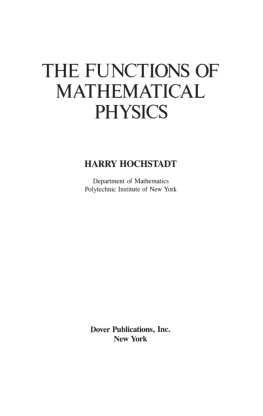
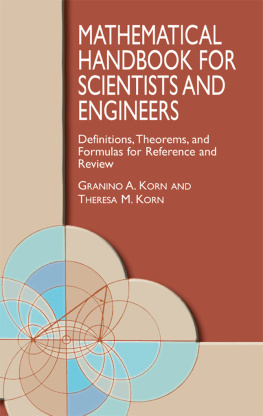
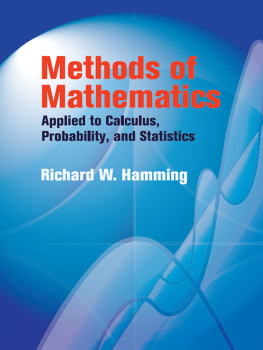

 Copyright 2018 by McGraw-Hill Education. All rights reserved. Except as permitted under the United States Copyright Act of 1976, no part of this publication may be reproduced or distributed in any form or by any means, or stored in a database or retrieval system, without the prior written permission of the publisher. ISBN: 978-1-26-001054-1
Copyright 2018 by McGraw-Hill Education. All rights reserved. Except as permitted under the United States Copyright Act of 1976, no part of this publication may be reproduced or distributed in any form or by any means, or stored in a database or retrieval system, without the prior written permission of the publisher. ISBN: 978-1-26-001054-1